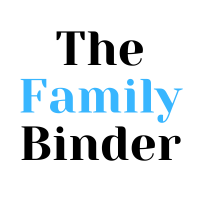Imagine never scrambling for birth certificates, emergency contacts, or kids’ schedules again. In 2025, an organized home is within reach, and a family binder is your secret weapon. This guide walks you through setting up a family binder—the ultimate tool to streamline home management, boost emergency readiness, and cut daily stress. You’ll discover why every household needs one, what to include, and how to keep your system updated. Ready for a calmer, more efficient year? Let’s get started.
Why a Family Binder is Essential in 2025
Imagine trying to track medical appointments, school events, and insurance policies—often all at once. The modern household faces more complexity every year. That’s why having a family binder isn’t just helpful in 2025—it’s essential for peace of mind and daily control.
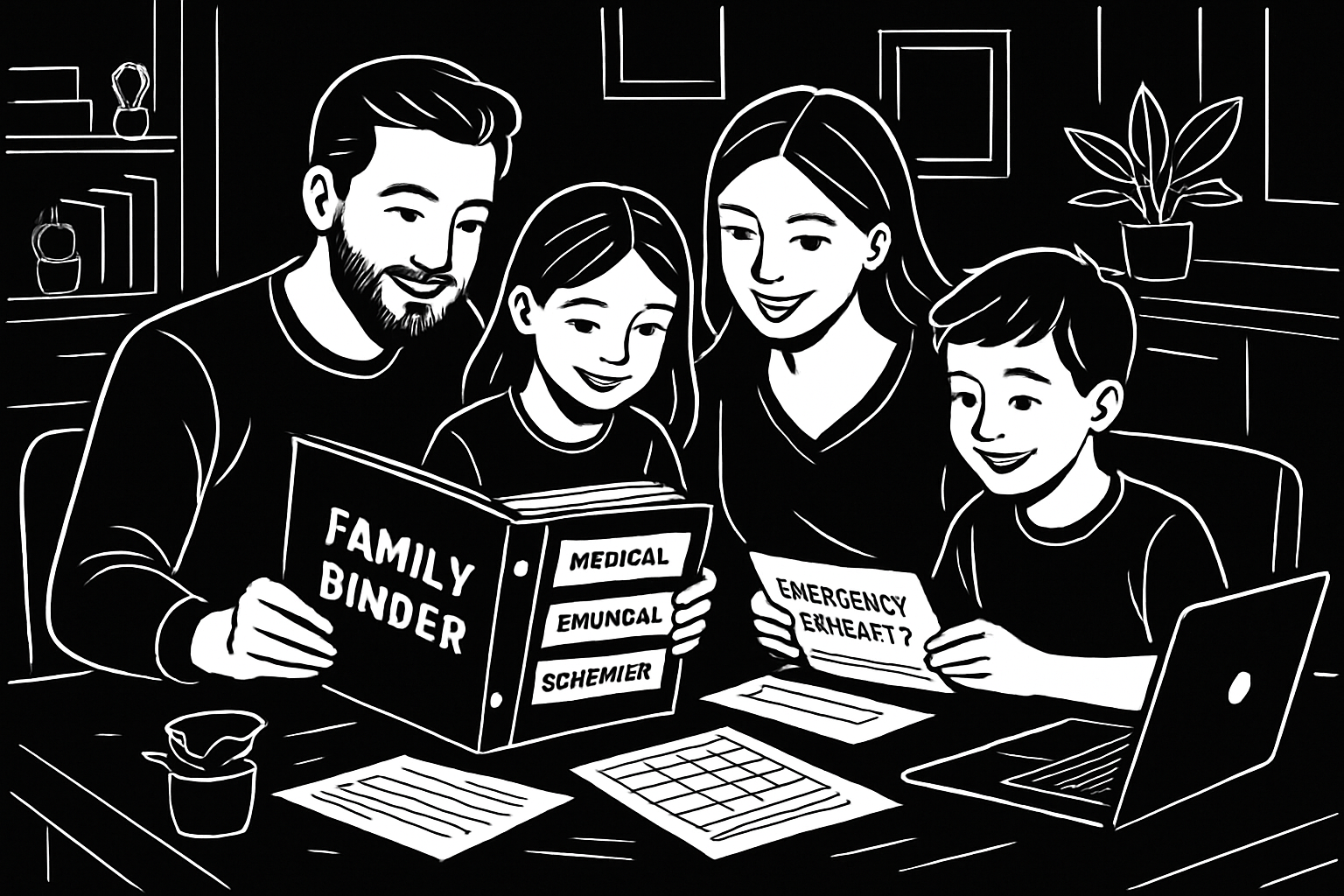
The Growing Complexity of Modern Family Life
Families today juggle more than ever before. Between managing finances, tracking digital accounts, and keeping up with kids’ activities, the list feels endless. Hybrid work and remote learning have only added more layers.
A recent survey found that 68% of families feel overwhelmed by home organization tasks. Emergencies, travel, or sudden illness can quickly reveal gaps in your system. A family binder brings all vital information into one place, making chaos manageable.
- Keep medical details, schedules, and contacts together
- Avoid frantic searching for documents
- Ensure every family member can find what they need
The family binder is your anchor when life gets hectic.
Peace of Mind and Emergency Preparedness
When the unexpected strikes, quick access to information is crucial. A family binder can make all the difference during a medical emergency, legal situation, or financial hiccup. Real-life stories show families using binders to simplify crisis management and allow loved ones to step in seamlessly.
Estate planners and preparedness experts recommend organizing your home’s essentials in advance. For a deeper dive into the advantages, see the Benefits of a Family Binder.
- Store medical histories, insurance cards, and emergency contacts
- Enable caregivers to “take over” if you’re unavailable
- Reduce stress during high-pressure moments
A family binder isn’t just organization—it’s peace of mind.
Streamlining Daily Home Management
Imagine meal planning, budgeting, and school paperwork all in one spot. That’s the power of a family binder. It reduces time spent searching for documents and simplifies routines for everyone.
- Use it for meal plans, to-do lists, and family schedules
- Keep receipts, warranties, and important contacts handy
- Facilitate smooth communication between family members or caregivers
A family binder helps set goals, track habits, and run family meetings. It’s the command center that keeps your household moving forward.
Future-Proofing Your Home Organization
A family binder evolves with your household. It adapts to new tech, digital accounts, and changing family needs. Whether your kids are growing up or your family structure shifts, the binder remains your foundation.
- Integrate sections for digital life and online accounts
- Prepare for estate planning and legacy documentation
- Stay current as trends move toward digital and printable solutions
In 2025, more families seek tools that blend physical and digital organization. The family binder is the solution that grows with you.
Core Components of a Modern Family Binder
A well-structured family binder acts as the backbone of household organization. By gathering all your critical information in one place, you reduce chaos and gain confidence that everything your family needs is always within reach.
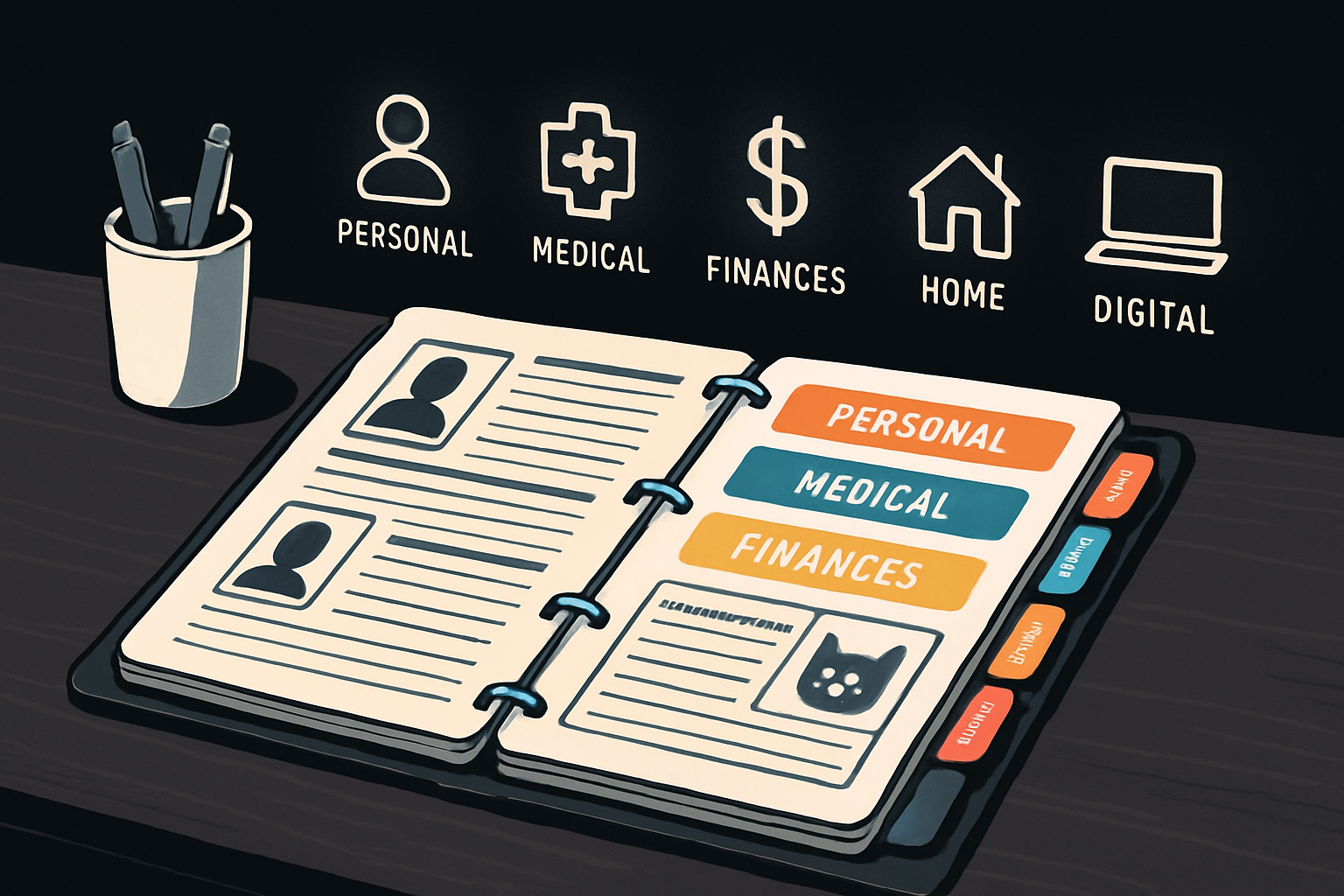
Personal & Family Information
The heart of any family binder is the personal and family information section. Here, you’ll keep profiles for each family member, including:
- Full names, birthdays, and contact details
- Emergency contacts: doctors, schools, trusted neighbors, and relatives
- Copies of essential IDs: birth certificates, passports, social security cards
- Pet details and care instructions
Many families create a dedicated tab for elder members, such as “Meme’s Info,” ensuring everyone’s needs are covered. By storing this data, your family binder becomes the go-to resource during travel, school registration, or emergencies.
Financial & Insurance Records
Managing finances is simpler when your family binder contains organized summaries of your financial life. This section can include:
- Bank account overviews, investment summaries, and credit card lists
- Insurance policies: health, auto, home, and life
- Loan documents and debt trackers
- Budgeting worksheets and monthly expense sheets
Andrea Dekker’s example shows how adding savings bond details and paid loan statements can help track progress. For a comprehensive checklist of what to include, see the Essential Documents for Families guide.
Medical & Health Information
Your family binder should safeguard medical information for every family member. This goes beyond just immunization cards:
- Immunization records and medication lists
- Health history and allergy info
- Insurance cards and provider contacts
- Consent forms and emergency care instructions
- Space for doctor visit notes and test results
Chronic illness caregivers often praise the dedicated medical binder section for making appointments and emergencies easier to manage. Keeping these records updated saves time and stress during health crises.
Home, Auto & Property Details
This part of your family binder helps you manage the “nuts and bolts” of daily life. Typical items include:
- Home title, mortgage, and property tax records
- Utility account contacts and login summaries
- Auto title, registration, insurance, and maintenance logs
- Warranty deeds and detailed home inventory lists
By storing property assessments and insurance info in a single section, you can quickly access everything needed for repairs, claims, or moving. It’s a practical way to minimize paperwork headaches and protect your investments.
Digital Life & Online Accounts
In today’s world, a modern family binder isn’t complete without digital details. This section ensures your family can access online accounts and manage digital assets responsibly:
- List of key digital accounts: email, social media, subscriptions
- Password log (using secure practices)
- WiFi codes and device access info for family and guests
- Guidelines for digital legacy—what happens to online accounts if you’re incapacitated
With digital estate planning growing in importance, your family binder provides peace of mind that nothing slips through the cracks, even in a tech-driven world.
Step-by-Step Guide: Setting Up Your Family Binder
Ready to create a family binder that truly works for your household? Follow this step-by-step guide to build a system that brings order, clarity, and peace of mind to your daily life. Each step makes the process simple, so anyone can start—even if you’re new to home organization.
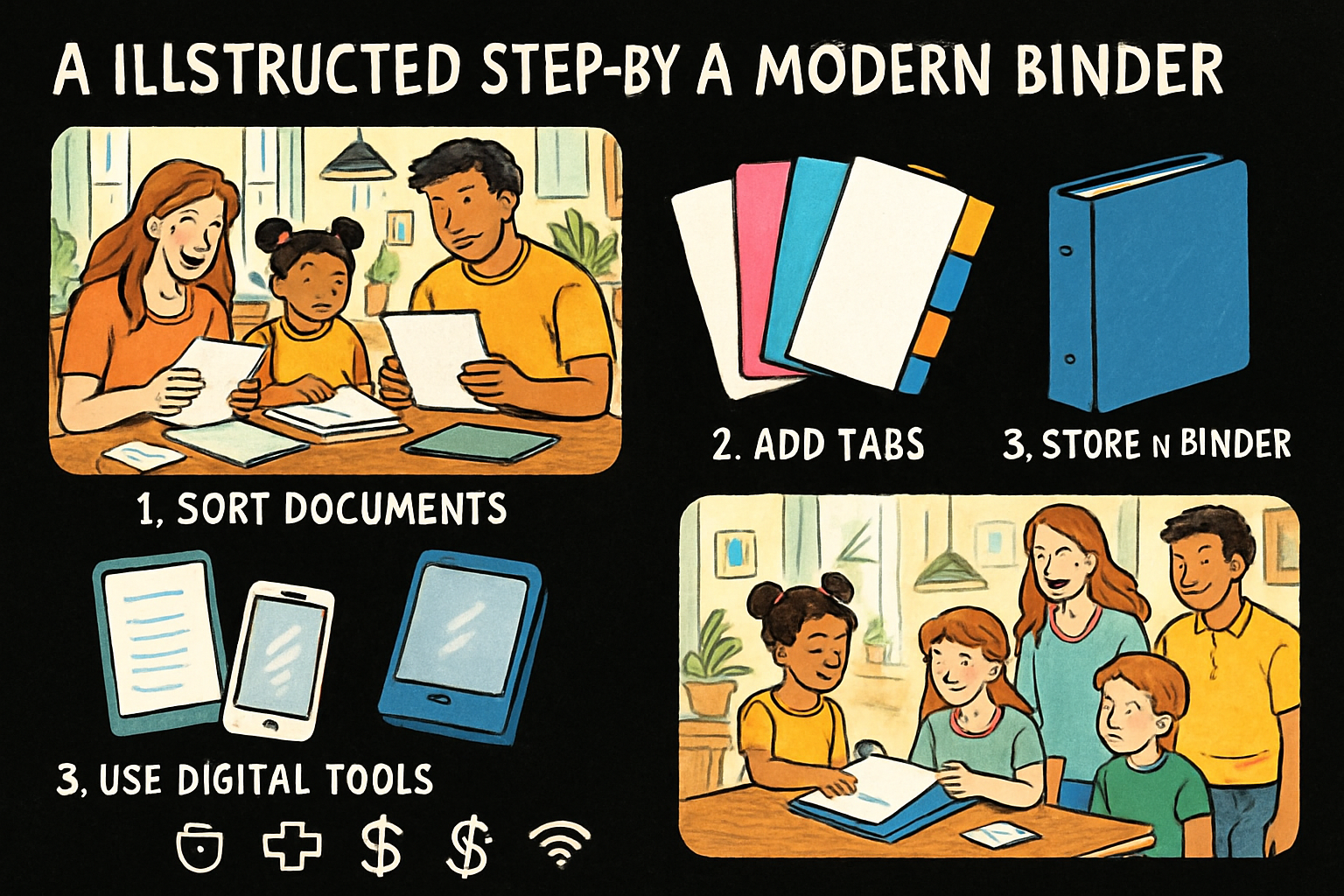
Step 1: Gather Supplies & Choose Your Format
Start your family binder journey by gathering the right supplies. Choose a sturdy 3-ring binder that can withstand daily use, or opt for a digital/printable PDF system if you prefer working online. Consider using sheet protectors for durability, tab dividers for easy navigation, and zip pockets for small items like receipts or spare keys.
Decide which format fits your family best. A fully printable binder is perfect for those who love pen and paper, while a digital fillable version offers quick edits and backups. The hybrid approach combines both, letting you print important pages and keep digital copies for emergencies. Color-coding your sections adds a visual cue, making the family binder even more user-friendly.
Step 2: Collect and Sort Essential Documents
Before assembling your family binder, make a checklist of all the documents you’ll need. This ensures nothing is forgotten and keeps the process organized. Photocopy originals, storing them in a safe place, and use the binder for accessible copies.
Sort documents by categories: personal, financial, medical, home, and digital. Cover sheets at the start of each section make quick referencing a breeze. Involve every family member—let everyone help gather and verify information. This collaborative approach turns the family binder into a true household resource, reducing the chance of missing or outdated records.
Step 3: Customize Tabs and Sections for Your Family
No two households are alike, so tailor your family binder to fit your unique needs. Clearly label each divider—think “Kids,” “Finances,” “Medical,” or even “Pets.” Add custom tabs for special situations, such as elder care, business information, or hobbies.
Printable planners, calendars, and checklists can be slotted in wherever needed. If your family has unique traditions or requirements, make space for those too. Flexibility is key: your family binder should be easy to expand as life changes, so don’t be afraid to add or adjust sections as needed.
Step 4: Fill Out and Organize Each Section
With your structure in place, it’s time to fill out each section of your family binder. Use templates or printables for consistency and a neat appearance. Don’t leave blanks—fill in every field to avoid confusion later.
Add instructions for accessing digital files or safe locations for originals. Including photos can help, especially for ID cards or property records. Review each section for completeness and accuracy. This attention to detail ensures your family binder is a reliable tool, not just a collection of papers.
Step 5: Secure and Store Your Family Binder
Security is vital. Store your family binder in a spot that’s both accessible and discreet, like a home office or kitchen cabinet. Share the binder’s location with trusted family members or caregivers so it’s easy to find during an emergency.
For extra protection, consider digital backups—encrypted cloud storage, USB drives, or external hard drives. Regularly review who has access and update permissions as needed. For more tips on keeping your family binder safe and effective, check out these practical Family Emergency Binder Tips.
Step 6: Introduce Your Family to the Binder System
Bringing your family on board is essential for long-term success. Hold a family meeting to explain what the family binder is, how it’s organized, and why it matters. Walk everyone through each section and answer any questions.
Assign responsibilities for updates—maybe one person tracks medical details while another handles finances. Encourage everyone to use the family binder for schedules, contacts, and planning. It’s also a great teaching tool for kids learning about organization and responsibility.
Step 7: Schedule Regular Maintenance and Updates
A family binder is only as helpful as the information inside. Set a recurring date—like the start of each year or after major life events—to review and update contents. Update for new births, moves, job changes, or policy renewals.
Purge outdated information and print fresh copies of digital forms as needed. Completing a thorough update can take as little as 30 minutes annually, but it keeps your family binder current and dependable. Consistent maintenance ensures your system adapts as your family grows and changes.
Customizing Your Family Binder for 2025 and Beyond
Ready to take your family binder to the next level? Customizing your system for 2025 means adapting to digital trends, expanding for modern needs, and making sure every family member can access what they need—securely and efficiently. Let’s explore how to future-proof your family binder so it truly fits your household’s unique lifestyle.
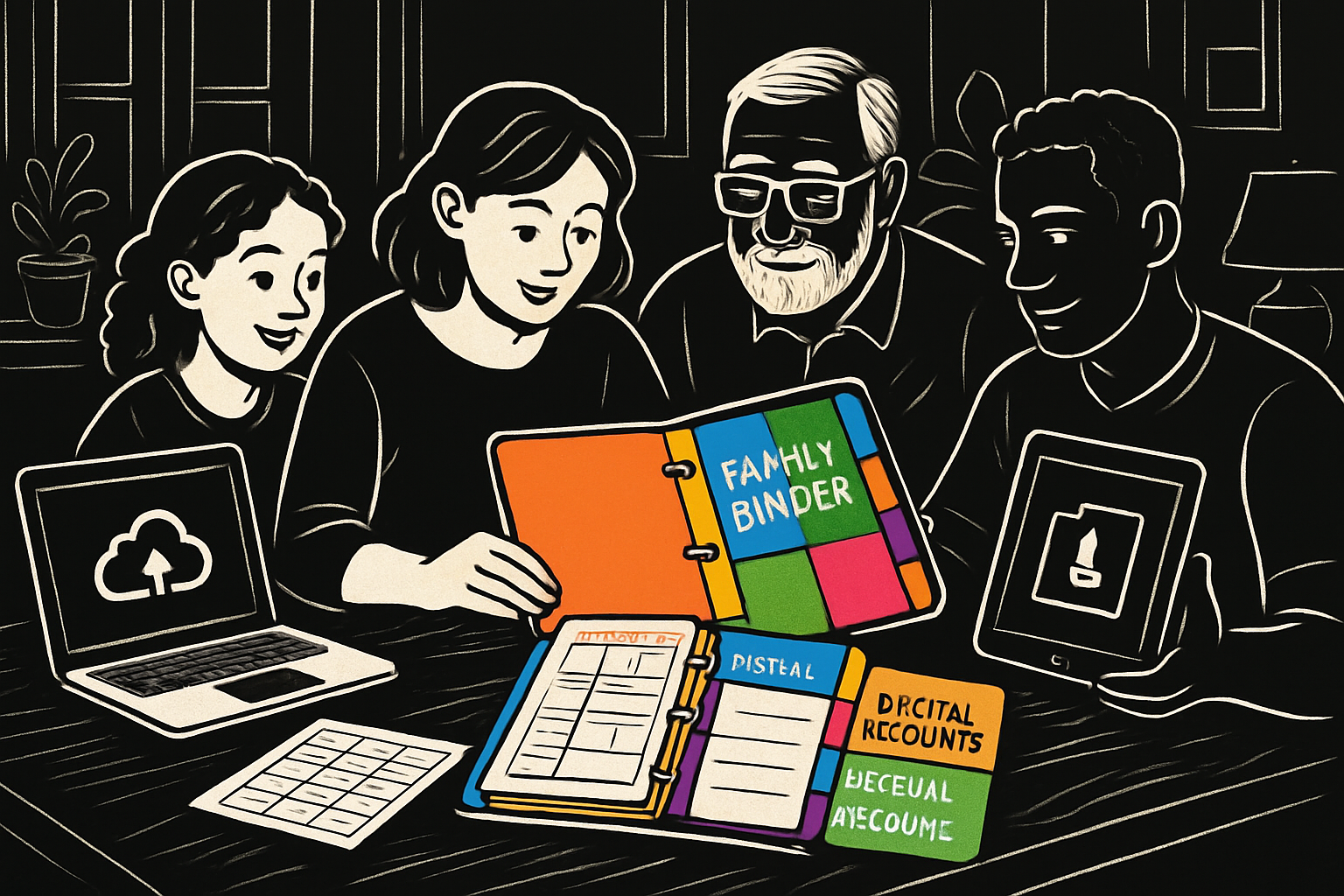
Adapting to Digital & Remote Lifestyles
In 2025, it’s common for families to manage both paper and digital information. To keep your family binder current, add QR codes or hyperlinks to digital files, making it simple to access documents from anywhere. Store encrypted copies in the cloud for secure, remote access.
Outline steps for virtual meetings or remote schooling right in your binder, ensuring everyone stays connected. Many families now save digital versions of their family binder to platforms like Dropbox or portable hard drives. This hybrid approach keeps your household organized, even when you’re away from home.
Including New Sections for Modern Needs
Modern families juggle more than just schedules and bills. Expand your family binder with sections for subscription services, smart home device details, and streaming passwords. Create dedicated pages for managing online learning and remote work credentials.
Don’t forget to include instructions for social media legacy planning. For a personal touch, add a “Family Values & Traditions” section to preserve what matters most. These updates help your family binder stay relevant and comprehensive for every stage of life.
Making Your Binder Accessible Yet Secure
Balancing easy access with privacy is essential for any family binder. Use code words or partial entries for sensitive data, while storing full details in a secure location. Only share the binder’s location or access instructions with trusted family or caregivers.
Consider using password-protected files for digital sections. For extra peace of mind, check out this Family Binder for Emergency Preparedness guide, which shares tips on keeping vital information both accessible and protected. This way, your family binder is ready for any situation without compromising security.
Personalizing for Diverse Family Structures
Every household is unique, so tailor your family binder for blended families, multi-generational homes, or co-parenting situations. Add tabs for stepchildren, in-laws, or elder care plans. Include guardianship documents, custody agreements, and any special care instructions.
Create sections that reflect your family’s culture or beliefs, making space for traditions or religious practices. A personalized family binder ensures everyone’s needs are met, fostering unity and clarity across generations.
Leveraging Printables and Templates
Consistency and style make your family binder easier to use. Download free or premium templates for calendars, meal planners, and budgeting worksheets. Laminate high-use pages, like weekly menus, for durability.
For families with children, printable checklists and trackers are a great way to get kids involved. Learn more about teaching financial responsibility to your children using your family binder. Regularly updating these templates ensures your binder grows with your family’s changing needs.
Maintaining and Maximizing Your Family Binder
A well-maintained family binder is the secret to consistent household organization and peace of mind. Treat it as a living document, one that evolves as your family grows and changes throughout 2025 and beyond.
Keeping Your Binder Up-to-Date
Staying current is essential. Schedule annual or biannual reviews of your family binder. Tie these check-ins to events like tax season or the start of a new year for consistency.
Common triggers for updates include:
| Event | Action |
|---|---|
| New family member | Add personal and medical info |
| Move or job change | Update addresses and contacts |
| Policy/account changes | Revise financial records |
| Major purchases | Add warranties or inventory |
Use a checklist to ensure all sections of your family binder remain accurate. Regular updates prevent confusion and keep your household running smoothly.
Involving the Whole Family
Make your family binder a team project. Assign “section owners” for different tabs—teens can manage digital logins, while adults handle finances and medical records.
Hold brief family meetings to review or plan binder updates. Encourage kids to keep their own mini-binders for school or activities. This hands-on approach fosters responsibility and makes organization a shared goal.
Readers have found that involving everyone in the family binder process leads to better communication and less stress when documents are needed quickly.
Using Your Binder for Everyday Organization
Your family binder isn’t just for emergencies. It’s a daily command center for meal planning, budgeting, and scheduling.
- Reference important contacts for appointments or travel.
- Store coupons, receipts, and warranties in zip pockets.
- Use laminated menu planners for easy meal prep.
Having everything in one place means you spend less time searching for information and more time enjoying family life. The family binder keeps your household running like a well-oiled machine.
Preparing for Emergencies and Life Transitions
When life throws a curveball, your family binder is a ready-made lifeline. In times of illness, travel, or crisis, loved ones can step in with minimal confusion.
Include living wills, power of attorney, and elder care documents. Many readers credit their binders for avoiding repeated funeral charges or simplifying hospital visits. For a personal perspective and step-by-step assembly tips, check out How to Create a Family Emergency Binder.
A well-prepared family binder ensures that, no matter what, your family has quick access to vital information.
Enhancing Security and Privacy
Security should always be top of mind. Use sheet protectors to guard against water and fire. Store original documents in a fireproof safe, keeping only copies in your family binder.
Encrypt digital versions and use strong passwords. Limit access to trusted individuals and note who knows the binder’s location. For more tips on safeguarding your binder, review the Emergency Binder Checklist, which highlights best practices for protecting sensitive information.
Consider keeping a backup binder offsite or with a trusted relative for added peace of mind.
Troubleshooting Common Challenges
Setting up and maintaining a family binder can feel overwhelming at first. Break the process into small, manageable steps to prevent procrastination.
Use placeholders or partial details for sensitive info, updating as needed. Schedule regular purges to avoid clutter. If family members are reluctant, share real-life stories of how a family binder made a difference during emergencies.
Stay flexible and update digital sections as technology evolves. With a little persistence, your family binder becomes an indispensable tool for every stage of life.
Now that you’ve seen how a Family Binder can simplify everything from daily routines to emergency situations, why not take the next step toward a calmer, more organized home? Imagine having every important detail—from finances to medical info—at your fingertips, ready whenever you or your loved ones need it. You don’t have to start from scratch or feel overwhelmed. With the Family Binder, you get a printable, editable system that’s ready for 2025 and beyond. Let’s make home organization easy and give yourself true peace of mind—Download Now.
